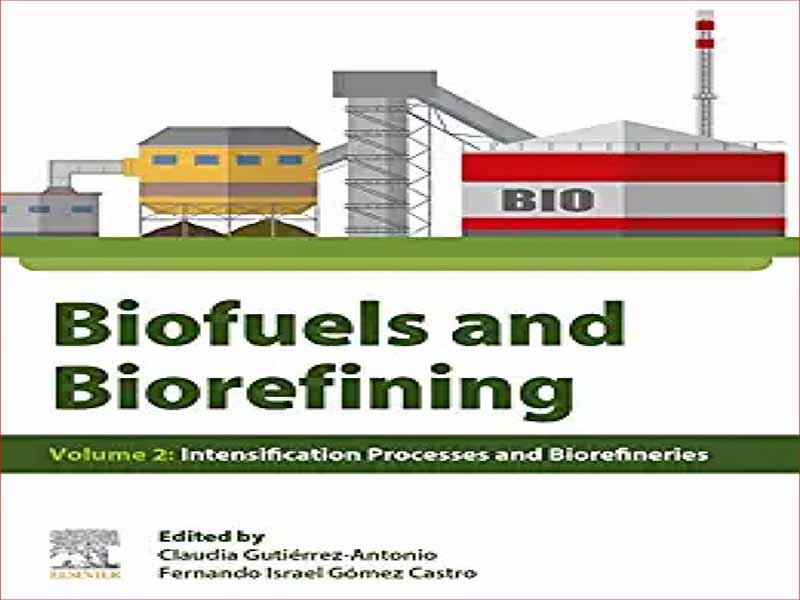- عنوان کتاب: BIOFUELS AND BIOREFINING-Volume 2: Intensification Processes and Biorefineries
- نویسنده: CLAUDIA GUTIERREZ-ANTONIO
- حوزه: سوخت
- سال انتشار: 2022
- تعداد صفحه: 439
- زبان اصلی: انگلیسی
- نوع فایل: pdf
- حجم فایل: 17.6 مگابایت
تا سال 2019، بخشهای اقتصادی در نتیجه افزایش جمعیت رشد اقتصادی داشتند. به طور مشابه، جهانی شدن با اجازه دادن به تجارت آزاد در سطح بین المللی با قیمت های مقرون به صرفه و حداقل زمان تحویل به چنین رشدی کمک کرد. بر اساس گزارش بانک جهانی، تولید ناخالص داخلی جهان طی دوره 2010-2019، 32.77 درصد افزایش یافته است، از 66126 به 87799 میلیارد دلار (بانک جهانی، 2021a). با این وجود، در سال 2020، ظهور و گسترش سندرم حاد تنفسی ویروس کرونا 2 (SARS-CoV-2) سناریوی جهان را تغییر داد (Liu, Kuo, & Shih, 2020). انتشار آسان ویروس باعث ایجاد یک بیماری همه گیر شد که هیچ واکسنی برای آن وجود نداشت. بنابراین، اقدامات پیشگیرانه شامل منزوی کردن جمعیت بود که منجر به تغییر در الگوهای مصرف و از هم گسیختگی برخی زنجیرههای تامین شد (جیانگ، فن، و کلمس، 2020). اگرچه اقدامات انزوا به نجات جان مردم کمک کرد که بسیار ارزشمند است، اما بدون شک توسعه بخش های اقتصادی را کند کرده است. از سوی دیگر، قبل از همهگیری، جامعه با مشکل تغییرات اقلیمی که ناشی از تجمع گازهای گلخانهای در جو است، مواجه میشد. طبق گزارش آژانس بین المللی انرژی [IEA] (2021a)، انتشار جهانی دی اکسید کربن در دوره 2010-2019، 9.5 درصد افزایش یافته است، از 30.4 به 33.3 Gt. در سال 2020، انتشار تقریباً 8 درصد نسبت به سال 2019 کاهش یافت (IEA, 2021b). با این وجود، پیشبینیها نشان میدهد که تقاضای جهانی انرژی میتواند بین سالهای 2023 و 2025 با رشد پیشبینیشده برای تقاضای انرژی به ترتیب بین 9 تا 4 درصد به سطوح قبل از همهگیری بازگردد (IEA, 2021c). تفاوت بین زمان بازیابی و تقاضای انرژی پیش بینی شده به پیاده سازی فناوری های پاک بستگی دارد. در این زمینه، آژانس بینالمللی انرژی با همکاری صندوق بینالمللی پول، یک طرح بهبود پایدار را پیشنهاد کرد که در دوره 2021-2023 اعمال شود (IEA, 2021d). برنامه بازیابی پایدار به عنوان اهداف اصلی تقویت رشد اقتصادی، ایجاد شغل و ایجاد سیستمهای انرژی انعطافپذیرتر و پاکتر در نظر گرفته شده است. این طرح شامل سیاست ها، سرمایه گذاری ها و اقداماتی برای تسریع استقرار برق کم کربن، افزایش گسترش حمل و نقل پاک تر، بهبود بهره وری انرژی ساختمان ها و لوازم خانگی، افزایش کارایی تجهیزات مورد استفاده در صنایع، توسعه تولید پایدار سوخت های زیستی، و افزایش نوآوری در زمینه های مهم فناوری.
Until 2019, the economic sectors showed economic growth as result of population increase. Similarly, globalization contributed to such grow by allowing free trade at an international level at affordable prices and minimum delivery times. According to the World Bank, the world gross domestic product during the period 2010–2019 augmented 32.77%, from 66,126 to 87,799 billion USD (World Bank, 2021a). Nevertheless, in 2020, the emergence and spread of the severe acute respiratory syndrome coronavirus 2 (SARS-CoV-2) changed the world scenario (Liu, Kuo, & Shih, 2020). The easy spread of the virus generated a pandemic, for which there was no vaccine available. Therefore, prevention measures included isolating the population, which led to changes in consumption patterns and the breakdown of some supply chains ( Jiang, Fan, & Klemesˇ, 2020). Although the isolation measures contributed to saving people’s lives, which are invaluable, this has undoubtedly slowed down the development of economic sectors. On the other hand, before the pandemic society faced the climate change problem, which is caused for the accumulation of greenhouse gases in the atmosphere. According to the International Energy Agency [IEA] (2021a), the global carbon dioxide emissions increased in 9.5% during the period 2010–2019, from 30.4 to 33.3 Gt. In 2020, the emissions decreased almost 8% respect to 2019 (IEA, 2021b). Nevertheless, the forecasts indicated that the global energy demand can rebound to its pre-pandemic levels between 2023 and 2025 with a projected growth for energy demand between 9% and 4%, respectively (IEA, 2021c); the difference between the recovery time and projected energy demand relies in the implementation of clean technologies. In this context, the IEA, in collaboration with the International Monetary Fund, proposed a Sustainable Recovery Plan to be applied in the period 2021–2023 (IEA, 2021d). The Sustainable Recovery Plan consider as main objectives boosting the economic growth, creating jobs, and building more resilient and cleaner energy systems. The plan includes policies, investments and measures to accelerate the deployment of low-carbon electricity, increase the spread of cleaner transport, improve the energy efficiency of buildings and appliances, enhance the efficiency of equipment used in industries, development of sustainable production of biofuels, and boost innovation in crucial technology areas.
Until 2019, the economic sectors showed economic growth as result of population increase. Similarly, globalization contributed to such grow by allowing free trade at an international level at affordable prices and minimum delivery times. According to the World Bank, the world gross domestic product during the period 2010–2019 augmented 32.77%, from 66,126 to 87,799 billion USD (World Bank, 2021a). Nevertheless, in 2020, the emergence and spread of the severe acute respiratory syndrome coronavirus 2 (SARS-CoV-2) changed the world scenario (Liu, Kuo, & Shih, 2020). The easy spread of the virus generated a pandemic, for which there was no vaccine available. Therefore, prevention measures included isolating the population, which led to changes in consumption patterns and the breakdown of some supply chains ( Jiang, Fan, & Klemesˇ, 2020). Although the isolation measures contributed to saving people’s lives, which are invaluable, this has undoubtedly slowed down the development of economic sectors. On the other hand, before the pandemic society faced the climate change problem, which is caused for the accumulation of greenhouse gases in the atmosphere. According to the International Energy Agency [IEA] (2021a), the global carbon dioxide emissions increased in 9.5% during the period 2010–2019, from 30.4 to 33.3 Gt. In 2020, the emissions decreased almost 8% respect to 2019 (IEA, 2021b). Nevertheless, the forecasts indicated that the global energy demand can rebound to its pre-pandemic levels between 2023 and 2025 with a projected growth for energy demand between 9% and 4%, respectively (IEA, 2021c); the difference between the recovery time and projected energy demand relies in the implementation of clean technologies. In this context, the IEA, in collaboration with the International Monetary Fund, proposed a Sustainable Recovery Plan to be applied in the period 2021–2023 (IEA, 2021d). The Sustainable Recovery Plan consider as main objectives boosting the economic growth, creating jobs, and building more resilient and cleaner energy systems. The plan includes policies, investments and measures to accelerate the deployment of low-carbon electricity, increase the spread of cleaner transport, improve the energy efficiency of buildings and appliances, enhance the efficiency of equipment used in industries, development of sustainable production of biofuels, and boost innovation in crucial technology areas.
این کتاب را میتوانید از لینک زیر بصورت رایگان دانلود کنید:
Download: BIOFUELS AND BIOREFINING-Volume 2



































نظرات کاربران